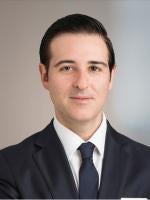Nearly seven years after the landmark Supreme Court decision in Alice Corp. v. CLS Bank Int’l, subject matter eligibility for patent claims under 35 U.S.C § 101 remains a moving target. In Alice, the Court found claims for a computerized escrow arrangement ineligible for patenting because they were directed to the abstract idea of “intermediated settlement” and did not recite an inventive concept that could impart eligibility under Section 101. While the Alice case focused on a software invention, a few recent lower court decisions suggest that, in certain circumstances, medical device patents may not be immune from similar patent eligibility challenges.
Late last year, in a case captioned DUSA Pharmaceuticals, Inc. v. Biofrontera Inc., a federal court in Massachusetts faced the question of whether patent claims directed to an improved light source for photodynamic therapy were ineligible for patenting. The representative claims at issue recited:
-
“An illuminator for diagnosing or treating a patient” including “a plurality of light sources…configured and controlled to provide a uniform output of light to the patient…such that uniform output of light is provided when measured at distances of 2 [inches] and 4 [inches];” and
-
“A method of photo dynamically diagnosing or treating a patient” by “illuminating the patient with an illuminator whose measured output over an active emitting area is at least 60% of the measured maximum overall operation distances.”
Defendant Biofrontera argued the claims lack an inventive concept and therefore not eligible under Section 101 because they (i) are directed to light itself which is an unpatentable natural phenomenon and (ii) contain only generic components to produce the claimed uniform output of light.
The district court disagreed. In finding the claims patent-eligible, the court stated that “[a]lthough the claims relate to light, they are not directed to light as a natural phenomenon … [t]he uniformity of light output is a requirement of and inseparable from the claimed illuminator.” Further, Biofrontera failed to provide evidence that the light produced by the illuminator—specifically, light whose measured irradiance over the active emitting area is at least 60% of the measured maximum from 2 inches to 4 inches—occurred in nature or could be produced by conventional illuminators.
While the DUSA Pharmaceuticals decision may give holders of medical device patents some comfort with respect to patent eligibility, a recent decision from the Federal Circuit raises fresh questions about the patent eligibility of device claims. In Yu vs. Apple, Inc., the court addressed claims directed to an improved digital camera that includes a plurality of image sensors and corresponding lenses. Each image sensor produces a separate digital image with a different intensity value, which the camera then merges to produce an enhanced digital image.
Defendants Apple and Samsung filed a Rule 12(b)(6) motion to dismiss, arguing that the patent claims were ineligible as being directed to the abstract idea of “taking two pictures and using those pictures to enhance each other in some way.” The lower court granted the motion, concluding that photographers have been using this technique for over a century, and the patentee had not shown any of the claimed elements were not well-known and conventional.
In a 2-1 decision, the Federal Circuit affirmed the lower court’s ruling. Despite the explanation of specific camera configurations and embodiments set forth in the patent specification, the majority found that the claims lacked elements that sufficiently covered this detail. As a result, because the image processing technique encompassed in the claims had been performed for over a century and the claims recited only conventional camera components (e.g., image sensors, lenses, memory, A-D converter, image processor) to carry out the image processing, the majority reasoned that the claims were ineligible for patenting as directed to an abstract idea.
Takeaways
These two decisions highlight the continued unpredictability of Section 101 jurisprudence and re-emphasize the importance of having both a detailed specification that fully describes the technical improvements realized by the invention, and claims of reasonable breadth that clearly incorporate the aforementioned improvements. With its Yu decision, the Federal Circuit has issued a caution to those seeking patents on medical device technology that inclusion of device structure and components in a claim set does not automatically exempt the patent from scrutiny under Alice. Instead, claims should be carefully drafted to account for the specific advancement over the prior art and contain limitations that go beyond generic, well-known process steps and hardware.




 />i
/>i

